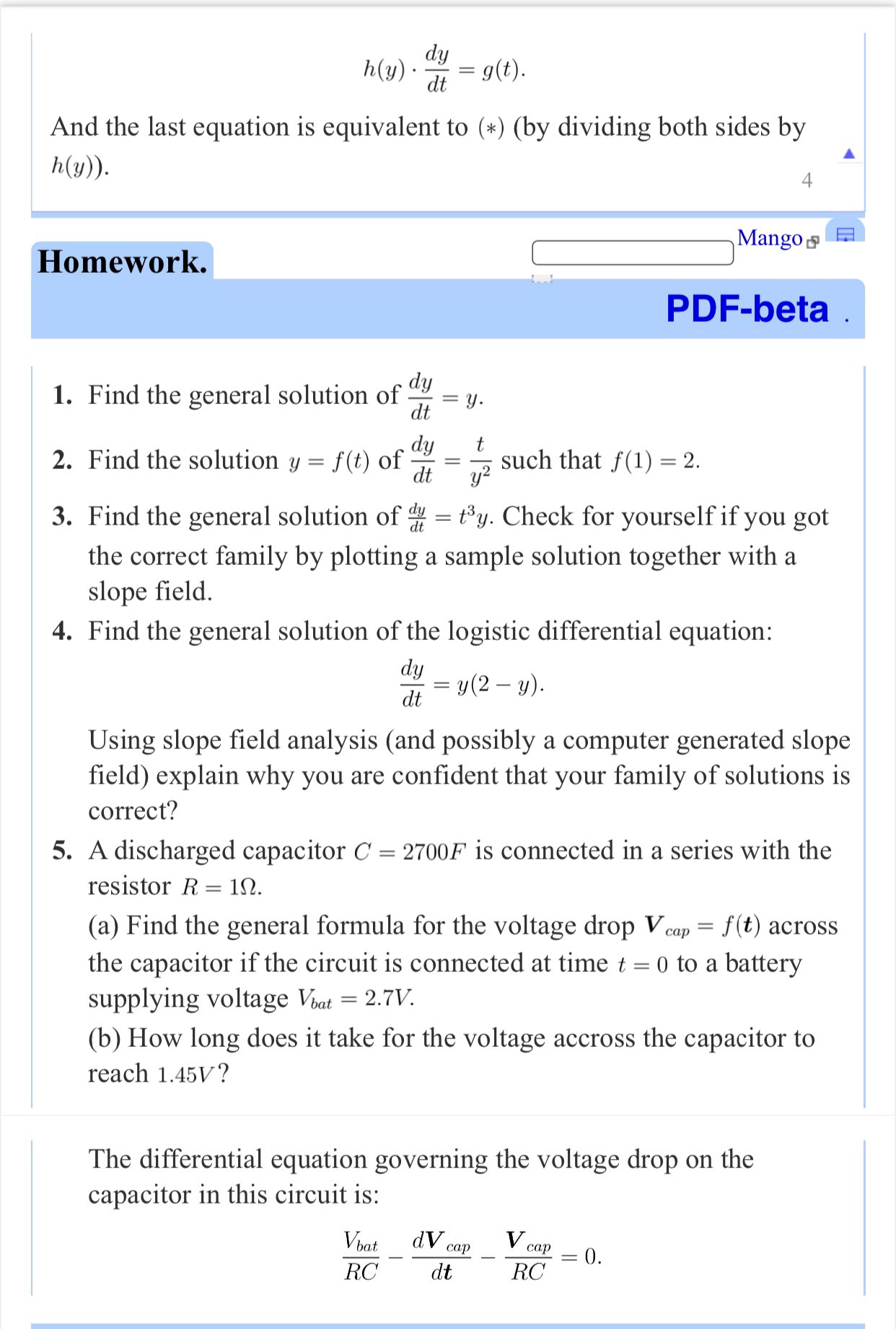
please calculate me 1 ,2, 3, 4, 5. Please write clearly for me. Thanks.
11:04 .. .. Safari resize pop-out Live Notes Expand All PDF-beta 1 Qualitative, numerical and symbolic solutions In the first lecture on differential equations we looked at qualitative and geometric solutions. In the second lecture we studied numerical solutions. In this lecture we illustrate that some (but not many) differential equations can be also solved symbolically. 2 A format of a separable equation We study equations that can be written in the form dy _ g(t) (* ) dt h (y ) We show that in some cases we can explicitly find a function f such that y = f(t) is the general solution of the above equation. For example, the following equations are of the form above.11:04 .. .. Safari AA Q D 2 of 5 dy 12 dt y2 + 1 dy dt = t . y, do dt = t sin 0, etc. 2 3 Example: dy/dt = t/y We illustrate the separation of variable method based on the equation: dy dt 342 We will justify the algorithm in the next section. (i) We separate variables putting all symbols involving dependent variable on the left side and independent variables on the right side: 3y-dy = tdt. (ii) We add the integral sign to both sides: ( 3y dy = Stat. Now we simplify the above equation: y3 = $12 + K. Note that we combined two constants into one constant K. (iii) We solve for the independent variable:11:04 .. .. Safari AA Q D 3 of 5 y = (3+2 + K) 1/3. We obtained a family solutions. Note that there is a constant K in the solution but unlike with indefinite integration, in the solution of a differential equation a constant is not added to the function of the independent variable but it appears inside of it. 3 4 Justification of the separation method We show that Theorem. The equations dy _ g(t) (* ) at h(y) ( * * ) / h(y)dy = / g (t ) at are equivalent. Note that in the above equation both the left-hand-side and the right- hand-side are collections of functions of t. If we differentiate (**) with respect to t we obtain the equivalent equation: at J muddy = g(t ) . The left-hand-side can be simplified by the Chain Rule (applying it reverse) dy dy = h(y) . it So then (**) is equivalent toMy) - % = 90:). And the last equation is equivalent to (4:) (by dividing both sides by h(31))- 1. Find the general solution of $5 = y. 2. Find the solution 3; = f(t) of 33: = % such that f(1) = 2. 3. Find the general solution of $1 = $33}. Check for yourself if you got the correct family by plotting a sample solution together with a slope eld. 4. Find the general solution of the logistic differential equation: 2: = 9(2 - '9)- Using slope eld analysis (and possibly a computer generated slope eld) explain why you are condent that your family of solutions is correct? 5. A discharged capacitor C = 2700F is connected in a series with the resistor R = 152. (a) Find the general formula for the voltage drop Vmp = f (t) across the capacitor if the circuit is connected at time t = 0 to a battery supplying voltage Vbat = 2.7V. (b) How long does it take for the voltage accross the capacitor to reach 1.45V? The differential equation governing the voltage drop on the capacitor in this circuit is











